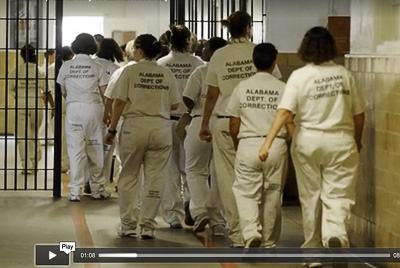Online Issue Framework about Alabama Prison Reform
Blog Category:
A discussion guide, titled Alabama Prisons: Why We Cannot Look Away from Alabama's Shame, and accompanying eight-and-a-half-minute video has been published on the AL.com website. This project was a collaboration of the David Mathews Center for Civic Life and AL.com.
The following are excerpted from the issue guide framework:
Approach 1: Increase Capacity and Improve Basic Conditions
Alabama's prison population far exceeds operational capacity, and conditions inside the facilities are raising constitutional questions. As a result, the Alabama Department of Corrections is now facing potential federal intervention and costly lawsuits. If the state does not significantly reduce overcrowding and improve basic conditions for inmates, then additional lawsuits may be filed and thousands of prisoners may be released. People want to feel safe in their communities, and many residents and lawmakers want to ensure that our prison system complies with the Constitution. If we want to avoid lawsuits, federal intervention and a potential release of prisoners, then we must increase capacity and improve conditions in the prisons. Our time line is limited and addressing difficult sentencing issues and root causes may take too long. If we want to solve this problem and stay tough on crime, then we must consider building new prisons, expanding existing facilities, and/or contracting with for-profit prisons.
Approach 2: Address Root Causes through Education, Support and Rehabilitation
Thousands of Alabamians are incarcerated every year, and the prison system is under stress. If we want to truly address the overcrowding issue, we cannot simply build more prisons. People must work to understand the root causes that lead residents to commit and re-commit crimes, and provide support to help remedy those deeper issues. Many people need educational support, community-based mentoring, substance abuse counseling and mental health services. Many offenders need access to educational services, job training and behavioral health support while incarcerated and after release. If we want to keep people out of prisons and avoid high recidivism rates, then we cannot ignore the real issues that drive individuals to break the law. By providing education, support and rehabilitation, we may also see benefits to communities, families, and the economy.
Approach 3: Implement Alternative Approaches to Incarceration
People who break the law must face consequences. Unfortunately, many Alabamians who break the law end up in state prison — resulting in overcrowding and dire conditions. Alabama's increasing prison population is costing taxpayers a significant amount of money, and the long-term impact on communities and families is troubling. If we want to continue to punish criminal behavior and avoid the costly practice of mass incarceration, then we must consider alternatives to prison. Specifically, we must implement community corrections programs in every county, expand problem-solving courts and provide opportunities for restorative justice. We must also ensure that justice is applied in an equitable and consistent manner.

